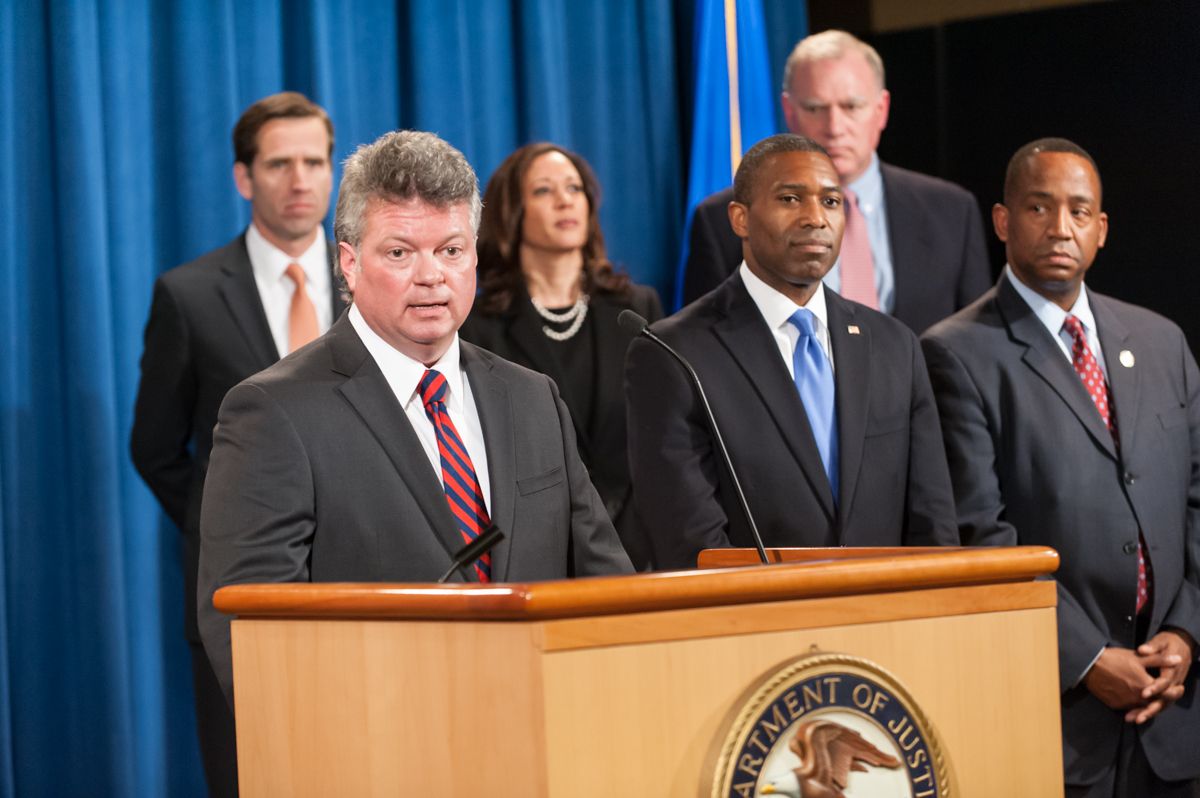Across the country, voters lined up at the polls and mailed in their ballots to vote in local and, in five states, statewide elections. While the majority of the action happened Nov. 5, Election Day, Louisiana hosted its election on Saturday (Louisiana hosts local and state elections on Saturdays rather than on the traditional Tuesday.)
It may have been an off-year for elections, but that didn’t keep Kentucky from ousting the Republican incumbent or Virginia from flipping control of both their House of Delegates and state Senate. It also didn’t stop Louisiana from holding onto the only Democratic governor in the Deep South.
In five states, statewide general elections for lawmakers, governors and/or statewide executives are held in off-years. Many of these states have traditionally been red but this year they were closely tracked due to the chance for an upset at the hands of Democratic contenders.
Kentucky
After alienating teachers during his governorship as well as his sinking favorability rating (he’s one of the most unpopular governors in America), Incumbent Republican Governor Matt Bevin lost the Kentucky gubernatorial race to Democratic Attorney General Andy Beshear. The vote was close, with a margin of difference of just over 5,000 votes, causing Bevin to call for a recanvass of votes until he conceded Thursday, more than a week after the election.
Last year, Kentucky teachers held statewide walkouts and “sick-outs,” protesting budget cuts, low pay and an overhaul of the states’ pension system. Bevin lashed out at teachers, accusing them of leaving students vulnerable to drugs and sexual assault while schools were closed due to walkouts. In return, teachers, regardless of party, campaigned strongly against him, a large contributing factor to the flip. Beshear, meanwhile, centered a large portion of his campaign on education.
Across the state, though, there seemed to be more of a rebuking of Bevin than the Republican Party as a whole. Republicans won every other statewide office, and Daniel Cameron won the attorney general race, becoming both the first African American and first Republican in over 70 years to hold that office in the state.
Virginia
At first, it appeared that this year, Republicans would have an advantage in Virginia’s elections after scandal surrounded three of the top statewide Democratic officials (Governor Ralph Northam and Attorney General Mark Herring admitted earlier this year to having worn blackface and Lieutenant Governor Justin Fairfax has been accused by two women of sexual assault, which he denies). But those headlines slowly faded and Republican legislators were left with less ammunition than they thought they would be. Instead, Democrats gained control over both the State Senate and the House of Delegates.
The balance of power was determined by just a few districts in the suburbs where Republicans in swing-districts campaigned more like Democrats, supporting Medicaid, LGBTQ rights and gun safety, distancing themselves from Trump. In particular, gun safety played a significant role in campaigning after Democrats tried to address gun control in a June special session following the Virginia Beach shooting, which was soon shut down by GOP legislators.
With control over both branches of the legislature, Democrats have the chance to implement those gun reforms — expanding background checks and banning assault weapons— broaden Medicaid, raise the state’s minimum wage and become the 38th state to ratify the Equal Rights Amendment (read more about that here).
Mississippi
In a race that in many ways was about the expansion of Medicaid, the results were surprisingly close for a state that hasn’t voted for a Democratic president since 1976. Democratic Attorney General Jim Hood led in the polls for much of the year before faltering in the weeks before and ultimately losing the governorship to Republican Lieutenant Governor Tate Reeves.

The election was always a long shot for Hood, though. In Mississippi, a Jim Crow era law still exists that says that candidates have to win both a majority of votes and a majority of the state’s House of Representatives districts. If neither candidate meets both of these standards, the election is decided by the state’s House (currently held by Republicans with a supermajority). It was unlikely that Hood would be able to actually meet both of these standards even if he managed to win the popular vote.
The outcome largely depended on positions of Medicaid expansion (Mississippi has thus far refused to expand it under the Affordable Care Act), with Hood strongly for it and Reeves against it. With Reeves now in power, it’s unlikely that anything with Medicaid will be changed.
Louisiana
As the only state in the Deep South with a Democratic governor, Louisiana voters had the option of ousting the incumbent governor or following Trump’s pleas for a “big win” after the loss in Kentucky. Ultimately, they stuck with the incumbent Governor John Bel Edwards, beating Republican businessman Eddie Rispone by a 40,000 vote difference.
Trump endorsed and campaigned for Rispone, who tried to frame Edwards as a radical liberal, saying he had destroyed jobs and raised taxes. But Edwards, who was first elected in 2015, has framed himself as a more conservative Democrat. In May, he signed a bill banning abortions after a fetal heartbeat has been detected, one of the most restrictive in the nation. Despite this break from the national party, he has also signed an executive order protecting LGBTQ individuals from harassment or job dismissals (although the Louisiana Supreme Court struck it down), expanded Medicaid and reduced Louisiana’s prison population.
Ultimately, we’ll have to wait and see whether these trends hold true as the 2020 Election gets closer, but for now, it appears that traditionally red states aren’t entirely out of bounds for the Democrats.